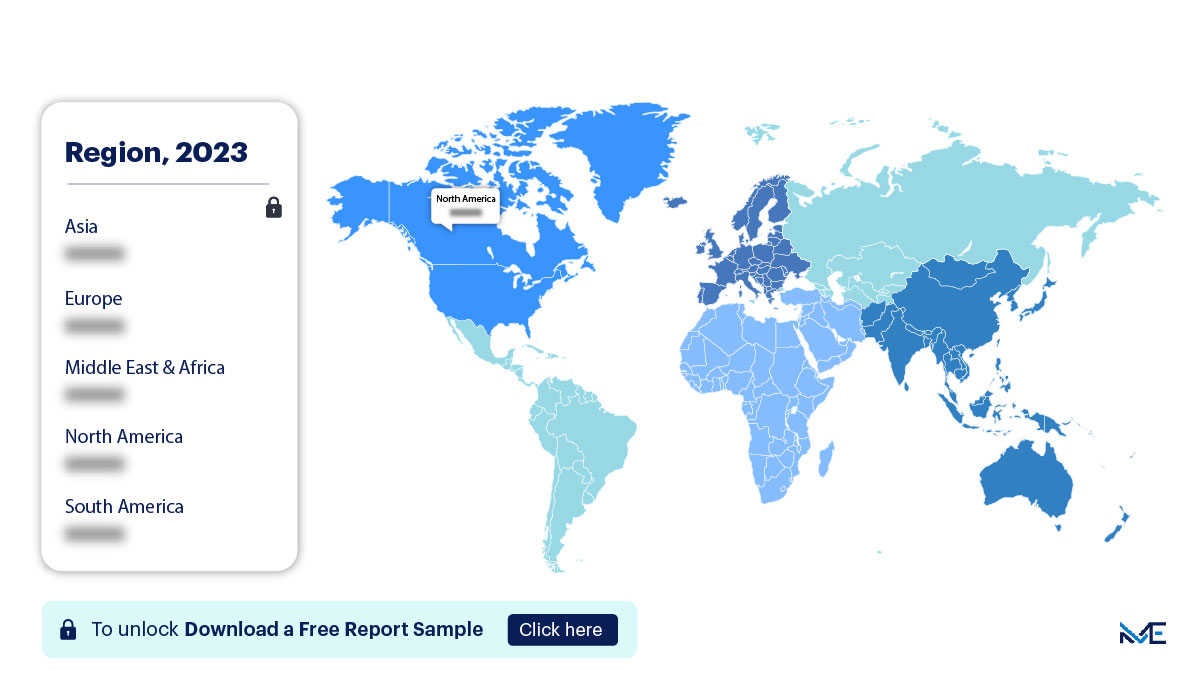Market Snapshot
| Study Period | 2019-2032 |
| Base Year | 2023 |
| Forcast Year | 2023-2032 |
| CAGR | 9.11 |


Gain accurate insights regarding the negative impacts of COVID-19 on all markets and industries
Download Sample PdfReport Overview
The Building Acoustic Insulation Market size is estimated to grow at a CAGR of 5.1% between 2022 and 2032. During this period, the market size is forecasted to increase by USD 3.2 billion. The growth of the market is influenced by various factors, including the increasing focus on noise pollution reduction, stricter building regulations, and the rising demand for enhanced acoustic comfort in buildings. Building acoustic insulation involves the use of materials and techniques to minimize the transmission of sound between different spaces, contributing to quieter and more comfortable indoor environments.
Building Acoustic Insulation Market Overview:
Drivers:
One of the primary drivers of the Building Acoustic Insulation Market is the growing concern and regulations related to noise pollution. As urbanization continues to increase, so does noise pollution from various sources, including traffic, industrial activities, and construction. In response, governments and regulatory bodies have introduced stringent noise control measures, making acoustic insulation a crucial aspect of building design and construction.
Additionally, the demand for improved acoustic comfort in both residential and commercial buildings is rising. Homeowners and building occupants increasingly value quiet and peaceful indoor environments. This drives the adoption of acoustic insulation materials and solutions to create spaces that are conducive to work, rest, and relaxation.
Trends:
An emerging trend in the Building Acoustic Insulation Market is the use of sustainable and eco-friendly insulation materials. Environmentally conscious consumers and builders are seeking insulation solutions that have minimal environmental impact. Materials like recycled glass wool, natural fibers, and acoustic foams with low volatile organic compound (VOC) emissions are gaining popularity in the market.
Another notable trend is the integration of acoustic insulation into building designs from the early planning stages. Architects and designers are collaborating with acoustic engineers to incorporate sound-absorbing materials and architectural features that enhance acoustic performance without compromising aesthetics.
Restraints:
One of the challenges faced by the Building Acoustic Insulation Market is the cost associated with high-performance acoustic insulation materials and installation. Premium acoustic insulation materials, such as high-density stone wool or specialized acoustic panels, can be relatively expensive. Additionally, the installation process may require specialized labor and expertise, further increasing costs. This can deter budget-conscious consumers and builders from investing in acoustic insulation.
Another restraint is the space required for acoustic insulation. In retrofit projects or buildings with limited available space, it can be challenging to incorporate thick insulation materials without compromising on usable floor area.
Building Acoustic Insulation Market Segmentation By Application:
The Residential segment is expected to witness significant growth during the forecast period. Homeowners are increasingly recognizing the benefits of acoustic insulation in creating peaceful and comfortable living spaces. Acoustic insulation is used in residential applications to reduce noise transmission between rooms, floors, and walls, enhancing overall living quality. Additionally, residential building codes and regulations are evolving to include noise control requirements, further driving the demand for acoustic insulation in residential construction.
Building Acoustic Insulation Market Segmentation By Material:
Glass Wool is expected to dominate the Building Acoustic Insulation Market. Glass wool is a versatile and cost-effective insulation material known for its excellent sound absorption properties. It is widely used in various building applications, including wall cavities, ceilings, and floors, to reduce sound transmission and improve acoustic comfort.
Regional Overview:

Download the report summary now!
Request pdf Sample
North America is expected to be a significant region in the global Building Acoustic Insulation Market, primarily due to the presence of strict noise regulations and a focus on sustainable building practices. The United States and Canada have well-established acoustic standards that drive the adoption of acoustic insulation materials.
Europe is also anticipated to play a pivotal role in the market, with countries like Germany, France, and the United Kingdom showing a strong demand for acoustic insulation in both residential and commercial construction. European regulations emphasize noise reduction in urban areas, fueling the need for effective acoustic insulation.
The Asia-Pacific (APAC) region is projected to experience substantial growth, driven by rapid urbanization, increasing construction activities, and a growing awareness of acoustic comfort. Emerging economies like China and India are witnessing a surge in demand for acoustic insulation in commercial and residential buildings.
Building Acoustic Insulation Market Customer Landscape:
The customer landscape of the Building Acoustic Insulation Market includes builders, architects, homeowners, commercial property developers, and building material suppliers. These stakeholders play a critical role in the selection and installation of acoustic insulation materials and solutions.
Major Building Acoustic Insulation Market Companies:
Leading companies in the Building Acoustic Insulation Market focus on product innovation and sustainability to maintain their market presence. Some prominent players include:
- Saint-Gobain
- Knauf Insulation
- Rockwool Group
- Owens Corning
- Johns Manville
- Armacell
- BASF SE
- Paroc Group
- Kingspan Group
- Sika AG
These companies are at the forefront of providing high-quality acoustic insulation materials and solutions to meet the diverse needs of the construction industry.
Segment Overview:
The Building Acoustic Insulation Market report provides revenue forecasts at the global, regional, and country levels, offering insights into growth prospects and regional dynamics within the market.
-
Application Outlook (USD Million, 2022 - 2032)
- Residential
- Commercial
- Industrial
-
Material Outlook (USD Million, 2022 - 2032)
- Glass Wool
- Stone Wool
- Acoustic Foam
- Fabrics
- Others
-
Geography Outlook (USD Million, 2022 - 2032)
- North America
- United States
- Canada
- Europe
- United Kingdom
- Germany
- France
- Rest of Europe
- Asia-Pacific
- China
- Japan
- India
- South America
- Brazil
- Argentina
- Chile
- Middle East & Africa
- Saudi Arabia
- South Africa
- Rest of the Middle East & Africa
- North America
RESEARCH METHODOLOGY
A research methodology is a systematic approach for assessing or conducting a market study. Researchers tend to draw on a variety of both qualitative and quantitative study methods, inclusive of investigations, survey, secondary data and market observation.
Such plans can focus on classifying the products offered by leading market players or simply use statistical models to interpret observations or test hypotheses. While some methods aim for a detailed description of the factors behind an observation, others present the context of the current market scenario.
Now let’s take a closer look at the research methods here.
Secondary Research Model
Extensive data is obtained and cumulated on a substantial basis during the inception phase of the research process. The data accumulated is consistently filtered through validation from the in-house database, paid sources as well reputable industry magazines. A robust research study requires an understanding of the overall value chain. Annual reports and financials of industry players are studied thoroughly to have a comprehensive idea of the market taxonomy.
Primary Insights
Post conglomeration of the data obtained through secondary research; a validation process is initiated to verify the numbers or figures. This process is usually performed by having a detailed discussion with the industry experts.
However, we do not restrict our primary interviews only to the industry leaders. Our team covers the entire value chain while verifying the data. A significant number of raw material suppliers, local manufacturers, distributors, and stakeholders are interviewed to make our findings authentic. The current trends which include the drivers, restraints, and opportunities are also derived through the primary research process.
Market Estimation
The market estimation is conducted by analyzing the data collected through both secondary and primary research. This process involves market breakdown, bottom-up and top- down approach.
Moreover, while forecasting the market a comprehensive statistical time series model is designed for each market. Macroeconomic indicators are considered to understand the current trends of the market. Each data point is verified by the process of data triangulation method to arrive at the final market estimates.
Final Presentation
The penultimate process results in a holistic research report. The study equips key industry players to undertake significant strategic decisions through the findings. The report encompasses detailed market information. Graphical representations of the current market trends are also made available in order to make the study highly comprehensible for the reader.
Personalized Business Report Tailored to Your Requirements
- Our expert analysts collaborate directly with you to comprehend your specific needs.
- Get data on regions, segments, competitors, and vendors of your choice.
- Information is presented in alignment with your exact preferences and formatting.
Free Sample Report
"Find new revenue generation opportunities"

